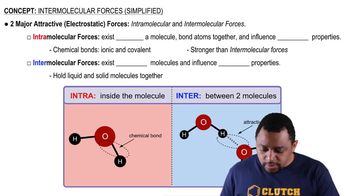Here are the essential concepts you must grasp in order to answer the question correctly.
Static Electricity
Static electricity is the accumulation of electric charge on the surface of objects, which occurs when electrons are transferred between materials through friction. In the context of laundry, when clothes tumble in the dryer, they can rub against each other, leading to the transfer of electrons and resulting in one fabric becoming positively charged and the other negatively charged.
Recommended video:
Galvanic Cell (Simplified) Example 1
Electrostatic Attraction
Electrostatic attraction is the force that draws oppositely charged objects together. When clothes have different charges after being dried, the positive and negative charges attract each other, causing the fabrics to cling together. This phenomenon is a common occurrence in laundry, especially with synthetic materials that tend to generate more static electricity.
Recommended video:
Intermolecular Forces (Simplified) Concept 1
Material Properties
The properties of materials, such as their ability to gain or lose electrons, play a significant role in static electricity. Different fabrics have varying tendencies to become charged; for example, synthetic fibers like polyester are more prone to static buildup compared to natural fibers like cotton. Understanding these properties helps explain why certain clothes cling together more than others after drying.
Recommended video:
 Verified step by step guidance
Verified step by step guidance Verified Solution
Verified Solution



 1:44m
1:44m